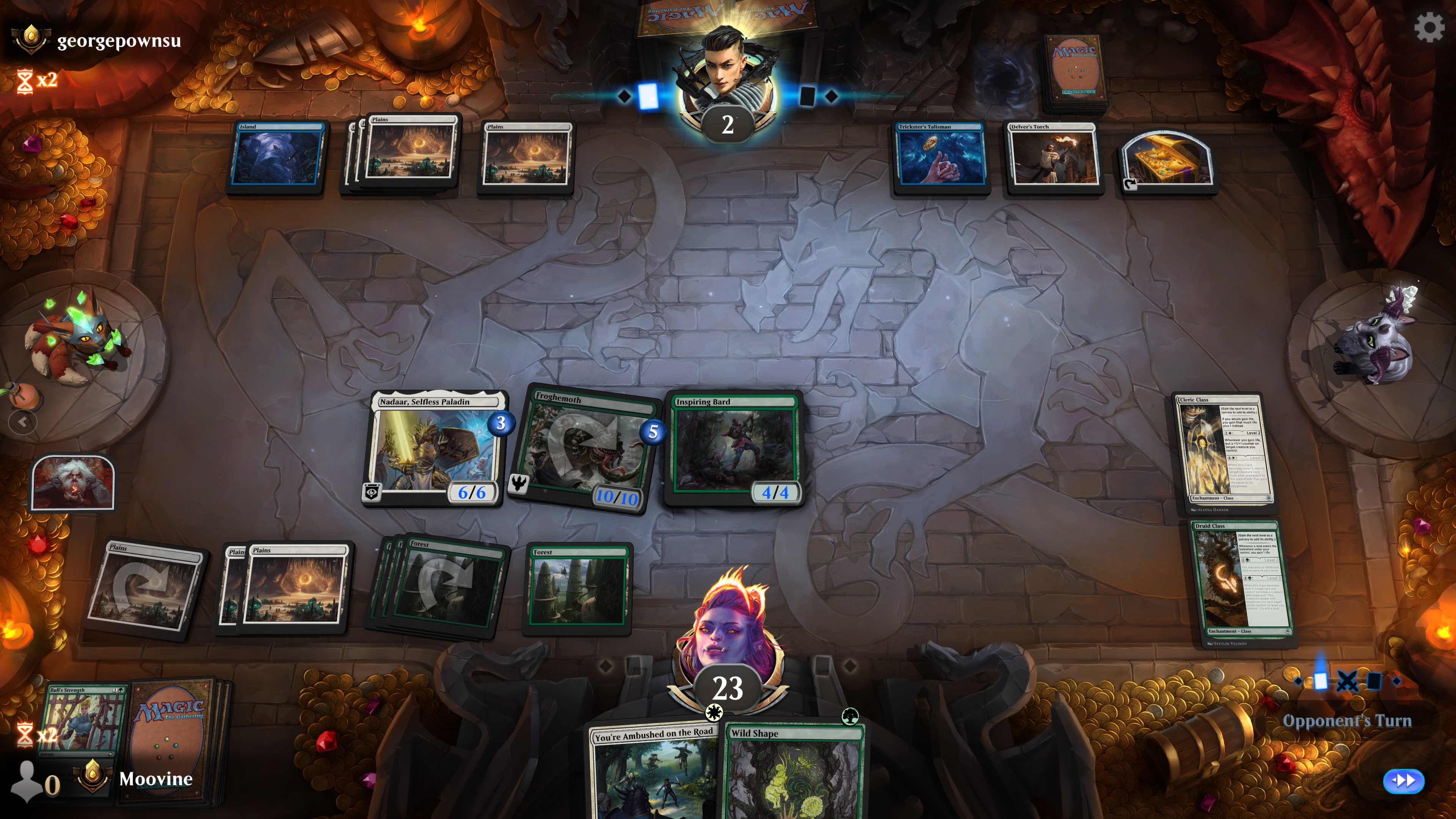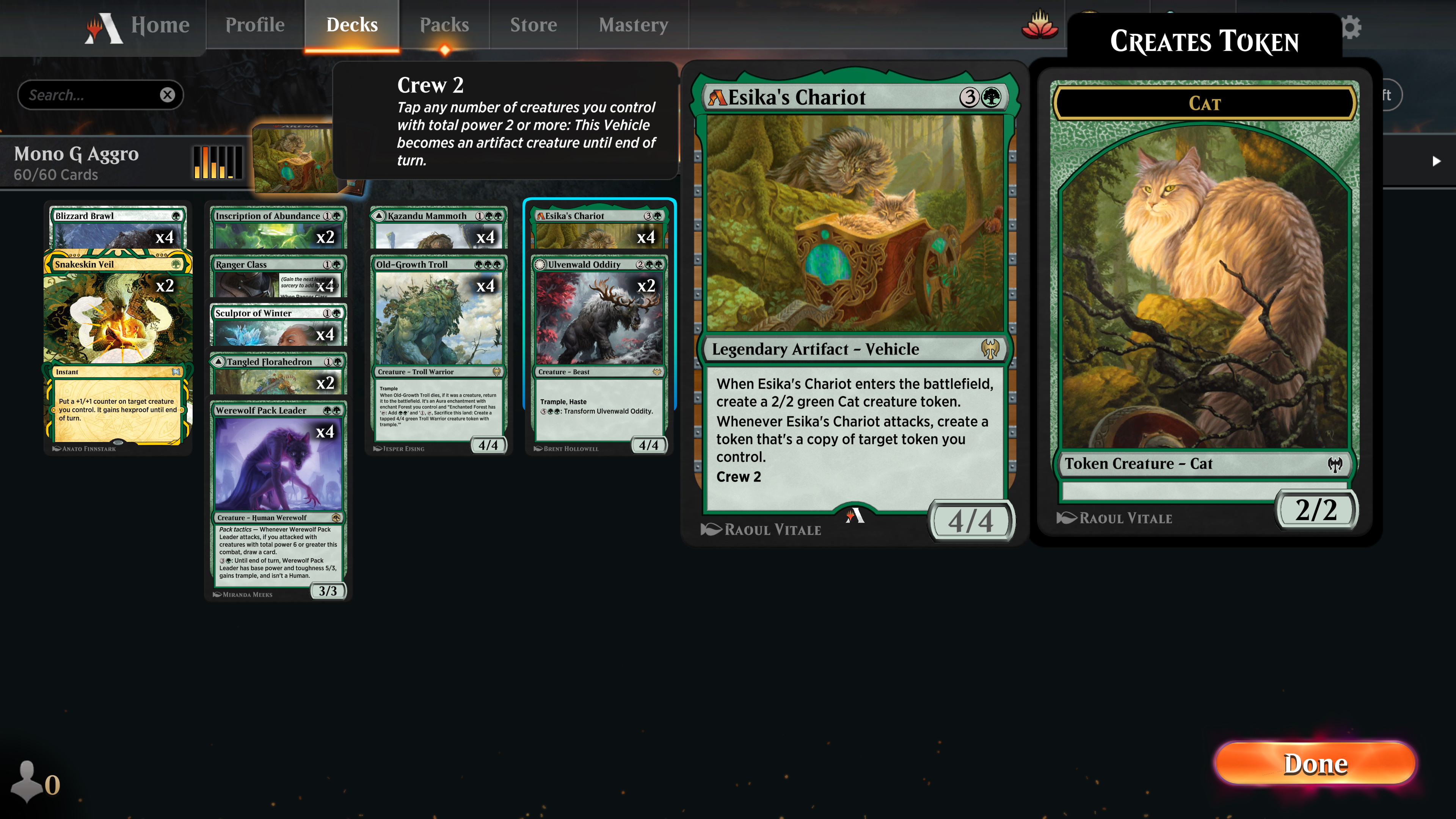Innistrad: Crimson Vow has renewed my thirst for turning cards sideways

In addition to our main Game of the Year Awards 2021, each member of the PC Gamer team is shining a spotlight on a game they loved this year. We'll post new staff picks, alongside our main awards, throughout the rest of the month.
Magic: The Gathering Arena, or MTG Arena for short, is easily my favourite implementation of the grandaddy of collectable card games. Proponents of Magic: The Gathering Online (MTGO) may scoff at this idea, but I'll take the visual flair of this newer client over the spreadsheet aesthetic of MTGO any day. MTG Arena doesn't attack my bank balance so much either.
Maybe it's because I don't play exhaustively, but I never seem to have a problem building decks either, something that can't be said for MTGO or the paper version of Magic for that matter. After an initial investment to get started, I haven't dropped any money on MTG Arena, or felt the need to thanks to daily rewards keeping things ticking over. It's the most flexible, affordable, and visually appealing version of the game, and I don't have to sacrifice space in my attic to the cardboard gods to keep enjoying it either.

The latest set to drop on MTG Arena is Innistrad: Crimson Vow, its 90th expansion. You'd think hitting that lofty number would mean Wizards of the Coast would be running out of new ideas by now, and to some extent it has, but somehow this is still one of the most fun sets I've played in MTG Arena in some time. That MTG Arena has managed to wrestle my attention from New World, Halo Infinite, Apex Legends, and Hearthstone is a sure sign that it is doing something right.
Drafting the vampire-themed set feels great, with some genuine decisions about which cards to pick. There's plenty of scope for different types of decks, although it's definitely a more aggressive set than some of the more recent expansions. It's less bomb-heavy than its predecessor too, the werewolf-themed Innistrad: Midnight Hunt, where big board clearers like Burn Down the House and the hard-hitting Adversary cycle dominate the draft environment—I'm looking at you, in particular, Intrepid Adversary. Getting overrun by wolves is no longer a threat, too.
While Crimson Vow still has moments in which I've fruitlessly dug for answers to a bomb such as a turn-three Halana and Alena, Partners, it's been an entertaining set to draft. Even the Planeswalkers don't feel quite as ridiculous as in other sets, Sorin the Mirthless aside. Kaya, Geist Hunter, is way down the pick order list on MTG draft helper Draftsim, and a couple of uncommon creatures (Bloodtithe Harvester and Packsong Pup) are better picks than lunging for Chandra, Dressed to Kill.
The set does have a few new mechanics to wrestle with, though none are particularly challenging. The introduction of Blood tokens is neat, as they permit you to search through your deck for answers while filling your graveyard at the same time. Cleave lets you cast a spell for a higher cost for a more powerful effect. Exploit has you sacrificing creatures for a benefit, and Disturb returns to make creatures in your graveyard useful again. The day-and-night effect from Midnight Hunt also returns, although, with fewer werewolves, it isn't quite as swingy as it was before.

Crimson Vow is a solid set, one that doesn't appear to have wrecked Standard, either. MTG has suffered from power creep at the hands of overly powerful cards in recent years, making for a few dominant decks that you either build yourself or brew against with specific meta builds. That's fine when the decks are fun to play, with lots of decisions to make and some clever interactions, but when the field is reduced to just two red/blue decks (and a red/blue/white deck), as we saw for the Strixhaven Championship top 8, you know something is amiss.
Wizards potentially has the answer to this problem though, in the form of Alchemy, its new digital format that supports a more dynamic metagame. It means overly dominant cards can be rebalanced (generally recosted, but the effect may be lessened too), and for the first time, digital-only mechanics can be used as well—cards that produce other cards, akin to Hearthstone's Discover mechanic.
It's a format that sets out on its own path from the paper version—something that would be considered sacrilege not so long ago, but in these socially-distanced times, makes a lot of sense. Well, it does apart from Alchemy being forced on Historic players, which feels like a classic Wizards misstep. There's an easy fix too—Just let those players keep using the original versions.

Take, Esika's Chariot, a powerful card that has seen play in plenty of decks, has been changed from creating two cat tokens to only one, and its Crew cost dropped from 4 to 2. Alrund's Epiphany has seen its Foretell cost increase from 6 to 7 mana and it only produces bird tokens if Foretold. While these are subtle changes, they're also necessary, keeping the cards from being too powerful.
Alchemy is an important new phase for MTG Arena and one that is already seeing some intriguing metagame choices and builds. It'll be interesting to see if it gains enough traction to really take off, but it feels like this is the only future that makes sense for the digital version of the ageing card game. Given I started playing MtG 24 years ago and still turn cards sideways most days, there's a good chance I'll be there to see where it takes me next.

Post a Comment